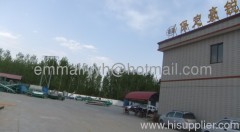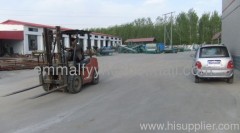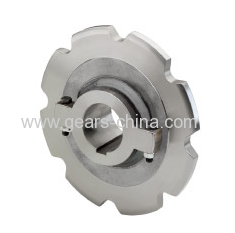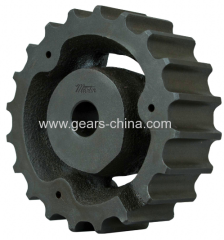



Durable conveyor lift made in China
| Min. Order: | 1 Set/Sets |
|---|---|
| Payment Terms: | L/C, T/T, WU |
| Supply Ability: | 150 set per month |
| Place of Origin: | Hebei |
Company Profile
| Location: | Baoding, Hebei, China (Mainland) |
|---|---|
| Business Type: | Manufacturer, Trading Company, Service |
| Main Products: | Bottle Label Remover Machine, 50 Type Waste Plastic Recycling Drying Machine, 100 Type Car Tire Shredder/Crusher, 50 Type Plastic Pulverizer, 2000kg/h Efficient Waste Plastic Recycling Machine |
Product Detail
| Model No.: | conveyor lift |
|---|---|
| Means of Transport: | Ocean |
| advantage1: | competitive price |
| advantage2: | durable and compact |
| advantage3: | supply installation |
| advantage4: | best service |
| Production Capacity: | 150 set per month |
| Packing: | negotiable |
| Delivery Date: | within 2 weeks |
Product Description
The hoist has the following characteristics:
drive power-feed into the induction discharge, large-capacity hopper intensive layout in the material hoist almost no material back and digging expected, therefore less reactive power.
enhance a wide range, such hoist on the type of material of less demand, not only enhance the general powder, granular materials, but also enhance the mill cut larger materials. Sealing, and less environmental pollution.
operational reliability, state-of-the-art design principles and processing methods, to ensure the reliability of machine operation, trouble-free time more than 20,000 hours. Lifting height high hoist running smoothly, so you can upgrade to a higher height.
the service life is long, hoist feed taken into the style, without bucket excavating material rarely occurs between squeeze and collision phenomena. Few scattered ensure that the material feeding, unloading, reducing mechanical wear of the machine design.
drive power-feed into the induction discharge, large-capacity hopper intensive layout in the material hoist almost no material back and digging expected, therefore less reactive power.
enhance a wide range, such hoist on the type of material of less demand, not only enhance the general powder, granular materials, but also enhance the mill cut larger materials. Sealing, and less environmental pollution.
operational reliability, state-of-the-art design principles and processing methods, to ensure the reliability of machine operation, trouble-free time more than 20,000 hours. Lifting height high hoist running smoothly, so you can upgrade to a higher height.
the service life is long, hoist feed taken into the style, without bucket excavating material rarely occurs between squeeze and collision phenomena. Few scattered ensure that the material feeding, unloading, reducing mechanical wear of the machine design.
Why Worry About Recycling Plastics?
A current promotional program sponsored by the plastics industry emphasizes the positive contributions that plastics make. And claims listed in those advertisements are accurate.
But as shown in the article on the preceding page, the largest single use for plastics is packaging. Because packaging has a short lifespan, it makes up a large portion of the plastics waste stream. But where does that "waste stream" lead?
In general, the Environmental Protection Agency says that in the early 1990s about 80 percent of all municipal solid waste was sent to landfills, 10 percent was incinerated and 10 percent was recycled. While more and more plastic is being recycled, the EPA estimates that plastics make up about 20 percent of the solid waste that is landfilled.
Most consumers think that the slow degradation of plastics is the primary reason that plastics should be recycled. However, research has shown that other waste, such as paper, wood and food wastes, also degrade very slowly in landfills.
The more serious problem with plastic waste concerns the additives contained in plastics. These additives include colorants, stabilizers and plasticizers that may include toxic components such as lead and cadmium. Studies indicate that plastics contribute 28 percent of all cadmium in municipal solid waste and about 2 percent of all lead. Researchers don't know whether these and other plastic additives contribute significantly to products leached from municipal landfills.
How toxic are plastics that are burned? Researchers don't know that, either. Plastics that contain heavy-metal-based additives may also contribute to the metal content of incinerator ash. The EPA is looking for substitutes for lead- and cadmium-based additives.
One additional concern relates to use of petroleum products. All plastics began their lives as petroleum. By increasing plastics recycling, scientists and engineers are able to reduce dependence on petroleum.







